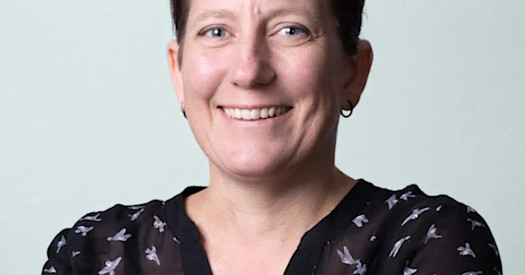 Drs. Iqbal and Fowler: 'We have built a cohesive community.'
Drs. Iqbal and Fowler: 'We have built a cohesive community.'
Which presentation(s) or panel discussion(s) did you find the most revelatory?
Dr: Iqbal: I thoroughly enjoyed the symposium, as my team’s research closely involves understanding the effect of mutation on protein sequence, structure, and function. While the science presented by the speakers was amazing, as an early career PI, I found the talk by Lisa Chadwick of NIH, “Everything you ever wanted to know about applying for NIH grants (but were afraid to ask),” extremely important and instructive. The next in line of my favorites would be the amazing keynotes by Heidi Rehm and Vijay G. Sankaran, bringing the critical importance of functional genomics and multiplexed assays for unveiling disease biology and their applications in clinical genomics.
Dr. Fowler: There were two sessions that were especially significant for me. I liked the session, “What is in a variant score?” by Jingyou Rao, a Ph.D. candidate at the University of California, Los Angeles. Her presentation was an excellent illustration of how the variant effects scientific community is growing and people are thinking in new ways. She discussed a new method for analyzing variant effects data that seemed very promising and could become the industry standard. It made me think we in my lab should consider analyzing our data in the same way.
I also liked Justin Kinney’s session, “Specificity, synergy, and mechanisms of splice-modifying drugs.” Justin, who is with Cold Spring Harbor Laboratory, offered a really creative application of Massively Parallel Reporter Assay in studying the mechanism of a new type of drug that modifies RNA splicing. He discussed how RNA in cells is processed and ways to correct defects in splicing and using technology to study that process.
What new information or insights did you acquire that will be used in your work?
Dr. Iqbal: I learned a lot from the workshops, especially by Ganna Reint on the tools from the Broad Institute Genetic Perturbation Platform and SatSeq. Both of these tools and technologies will be useful for my group’s research. I want to specifically highlight the ClinGen talk by Courtney Thaxton. I’ll use ClinGen APIs to integrate ClinGen data into the Genomics 2 Proteins platform that my group develops.
Dr. Fowler: I earned a lot from the posters and the talks on imaging-based approaches for analyzing variant effects. The talks were by Anne Carpenter from the Broad Institute and William Buchser from Washington University. My colleagues and I in my lab are seeking better approaches to analyze this same type of data, so their insights were my big technical take-aways from the symposium.,
Did the symposium meet – or exceed – your expectations? Why?
Dr. Iqbal: Yes; it surely did! I recognized a nice balance in the number of talks focusing on non-coding and protein-coding MAVEs. A mix of computationally and experimentally focused works were also noticeable, and also talks diving deep into specific genes and diseases as well as the development and applications of large-scale resources such as ClinGen, MAVEdb and Genomics 2 Proteins portal.
Dr. Fowler: The symposium definitely exceeded my expectations. We had a great diversity of talks. This was the seventh annual symposium and it has become clear that the mutational scanning space has left its infancy and youth, and is emerging into adulthood. There now are all these amazing and mature applications of the technology and compelling stories in very different topic areas. This is reflective of the technology maturing to the point where people are now using technology to solve complex biological problems.
What are your suggestions/recommendations for MSS 2025?
Dr. Iqbal: If I could make any recommendation for MSS 2025, it would be to start the poster session a little early.
Dr. Fowler: The symposium captures only a cross-section of people doing these types of assays. Mutational scanning is now are being taken up by scientists of all stripes, and many of them are not connected to the symposium or the AVE Alliance. We could consider specializing sessions, or even designating whole days or half-days around some of the major applications. So, I think it would be good to make “the tent” bigger, and enlarge the scope of the conference.
Any other observations about the symposium?
Dr. Iqbal: The symposium was heavily attended by grad students and postdocs. Given the excellent quality of science presented by companies, more of them could be helpful for the careers and networking of young professionals. Overall, it was an excellent symposium!
Dr. Fowler: Because we have been holding the symposium for several years, it’s clear that many people who attend know each other well. So many collaborative relationships have developed. This year – more than in previous years – there were lots of great discussions among people who may not have seen each other from the previous year. I felt that we have built a cohesive community.


